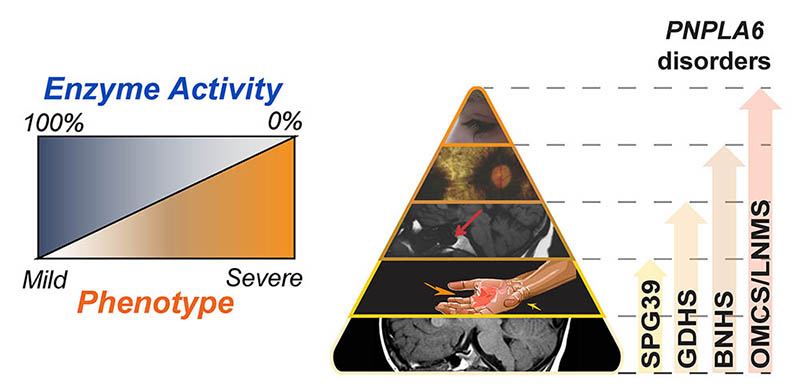Scientists unravel genetic basis for neurodegenerative disorders that affect vision
NIH-led findings point to a biomarker for rare disorders associated with the gene PNPLA6
Led by researchers at the National Institutes of Health (NIH), a team of scientists has uncovered the complex molecular mechanisms underlying neurodegenerative disorders linked to the gene PNPLA6, which encompass a range of conditions affecting mobility, vision, and hormonal regulation. Published in the journal BRAIN, the research offers a deeper understanding of PNPLA6-related conditions at clinical, genetic, and molecular levels, paving the way for tailored diagnostic and therapeutic approaches.
PNPLA6-related disorders arise due to mutations that impair the function of an enzyme involved in the regulation of lipid metabolism and membrane stability within neurons, known as neuropathy target esterase (NTE). Inhibition of NTE activity has been linked to neurological disorders such as organophosphate-induced delayed neuropathy, hereditary spastic paraplegia, Boucher-Neuhäuser syndrome and Oliver-McFarlane syndrome.
Robert Hufnagel, M.D., Ph.D., and colleagues at the NIH’s National Eye Institute (NEI) Ophthalmic and Visual Function Branch, conducted a systematic review and analysis of data from more than 100 patients with PNPLA6 mutations. Using neuroimaging, electrophysiological studies (where neurons’ electrical signals are measured and analyzed to understand their function and properties), and genetic testing information, the researchers meticulously evaluated mobility, vision, and hormone expression.

NTE helps regulate lipid metabolism and membrane stability within neurons. Mutations in the PNPLA6 gene inhibit NTE activity, leading to neurological disorders.
This page was last updated on Wednesday, May 15, 2024